At this point in the proliferation of electric cars, we are already beginning to see which companies are prepared and which ones are not for things like a crisis or a shortage of supplies. And how long it takes for you to get a new BEV or PHEV will be a telling sign:
- You can even start to see which car companies are electric friendly and not.
- You can also see who is prepared for shortage and crisis and who is not.
- Prepared ones: “Big 3:” Tesla GM and VW have their own plants for all parts.
- The problem: independent battery factories and demand from many makers.
- This is new reality of EV car making until peak of demand passes like it did with cell phones
- As the legacies eat up demand for batteries this is a game changer for startups as they may need to make their own battery making apparatus first before moving to cars.
Depending on who you recently purchased your new BEV from recently, there might be a good chance your long range EV known as a BEV car will be delayed in the production process, because independent battery suppliers are running out of car batteries. Apparently the cause isn’t just the lack of materials/shortage of supplies, but more so because they simply cannot keep up with demand.
Although car makers are trying to make the best of the situation and in some cases downplay it, as more of them launch products into the market, especially in the next coming two years as we expect just about all of them to roll out with some kind of BEV product to sell, the shortage will intensify and worsen. Many EV car startups may not realize this yet, but because the legacy carmakers who are now finally getting into the BEV market with their products, they just cut into what could have been the startup EV supply that would have made their EV startup product rollout.
So an EV startup wants to break into the EV market with an already limited battery supply, they need to first need to make their own batteries. What we’re beginning to see here is, who is most prepared not just for manufacturing glitches on supply and demand, but who is really prepared in case of severe shortages to crisis levels, or who is ready to make vehicles in the case of an apocalyptic disaster, and how future companies will be able to break into the EV car industry.
The Problems Car and Car Battery Makers Have
VW, BMW, Daimler, Hyundai, Renault, and GM are all legacy car makers that all have seen over the past two years with their all electric EV products, demand that has surged past their capabilities for them to adjust production capacity. Most of these cases its about a learning curve to judge how far and by how much auto makers are succeeding and failing to produce the right electric car for the right market. But in some of those cases, the reason wasn’t because of internal problems, it was because of an ongoing issue globally.
If you are an independent battery maker like LG, BASF, 3M, or Argonne, you’ve probably gotten yourself way over your head. You supply battery or battery components to several car manufacturers and can’t keep up with the demand. Hyundai is having this problem with LG and their new Konic in Norway and had this problem with them last year as they rolled out their Ionic EV and couldn’t satisfy demand. The April 21, 2017 Hyundai company memo on IonicForum.com:
“Over the 12 months since sales of the Ioniq Electric in the United States began in March of last year Hyundai sold only 544 of the cars despite an apparent backlog of pre-sale orders. “Now, a premature ordering halt has been announced in a sales bulletin to dealers due to a Hyundai ‘temporary global battery supply shortage’ apparently from their battery supplier, LG. It now appears as though demand for the Ioniq Electric is far higher than anticipated. As a result, Hyundai is attempting to increase production on its side, but LG Chem won’t be able to match that with increase battery production, at least not immediately.”
The Problem: It’s All ABout the Batteries!
A picture is developing here. If you are an electric car maker, and you do not have direct access to both the fuel cells and battery assembly, you are at the tender mercies of the battery industry, and screwed if there’s a crisis. And unless you make other kinds of cars or products to keep your balance sheet going, your profit margin is seriously in jeopardy, if not the survival of your business. This dynamic will make it very difficult for electric startups to roll out their products, if not impossible. If a legacy carmaker is having these problems like Renault or Hyundai are with their battery suppliers, what makes a startup think they’ll have a better shot of getting a battery from the same diminished tree?
It is funny when you see a startup rollout a prototype with claims of a 300-500 mile range to now wonder what battery company on earth has the time or the resources to put that much battery in a car when Hyundai or Renault can’t put a tiny pack inside a commuter car! They need to solve the battery issue first before thinking about building the car.
The Secret to Successful BEV Production
That’s been part of the success so far or at least part of the secret sauce for some of these car companies making an all electric car. It’s about having direct access to those makers of the fuel cells and have as many as possible as the technology changes, and then you find a cell with the right recipe, you have a factory standing by that makes batteries so you can put them right away into the battery packs so that you can quickly put it into the production of the cars.
This is how Tesla does it with its arrangement with Jeff Dahn, an academian at a Canadian University who invented and holds patents on lithium ion technology Tesla uses. Their 5 year agreement allows Dahn to travel globally if necessary and find the latest battery tech Tesla can put into its cars ASAP.
In fact for about 5 years before their first full production car, that’s how Tesla first started in the electric car business. They had to purchase gliders (those are fully assembled cars but without guts in them which allows other companies to put their own fancy high powered engines etc into them) from Lotus while developing their own powertrain (the first one was based on Nikola Tesla’s electric motor, BTW) and battery energy supplies before getting into the business of actually making their own car.
Despite their balance sheet issues, this is what makes their stock so attractive. They are still the only startup in the world who has successfully survived to make it to mass production of an all electric car. They have the largest charging network in the world, and they own the largest battery factory in the world. They have good relationships with their cell makers that puts the cells into the packs. This is the secret to building an unhindered full production BEV without supply problems. GM and VW have something similar with their corporate infrastructure and their suppliers. But also keep in mind, that this is also why Tesla had problems at first building their Model 3.
You need to have the supplies in place, and you have to have the means to ship it, and have an apparatus in place to keep an equilibrium between supply and demand. That’s one of the reasons when they had problems moving A to B instead of outsourcing, Tesla built their own tractors and put them to use.
This is in fact how the big three (who they are and by what standard are discussed below) get to the core of making cars. It’s about having as much of your own resources in place to assemble these cars. If at any part of the process if there’s a glitch that slows, hinders, or stops the assembly process, you find someone, then something like a business, or even make a new thing to help you through to finish the process. And if necessary, you buy whatever it is that helps you accomplish what needs to get done.
This is how GM bought Cruise Automation, to buy its way to the top of the driverless car race right next to Tesla. This is how Tesla introduced us to the Mighty Semi, the already iconic electric tractor we love to love, that was a solution to Tesla’s transportation of battery supplies crisis for Model 3. There would be no Model 3 if it were not for Mighty Semi. This is how VW is spending USD $84 billion on electric car development, $25 billion in batteries alone.
With a Battery Crisis a Bigger Picture Develops: What Side of the Fence?
In this battery shortage crisis you are starting to see who is all electric car friendly, who is not, who is prepared and capable of making an all electric car to final assembly, who is not, and who is invested in car battery technology, and who is not.
But keep in mind that just because a car company doesn’t have their own battery plant doesn’t mean that they’re not all electric car friendly, or don’t want to invest in the technology, it may be that they aren’t big enough or particularly don’t have the resources to make such large investments. Still in its formation process, the all new all electric car industry as I’ll call it because 100 years ago there was a thriving all electric car industry that went extinct, and the present one is somewhere still in gestation and postpartum, and mistakes, missteps, and missed opportunities are abound.
The glaring example anyone in the world who is anything about cars is paying close attention to as lessons learned, is Tesla with its Model 3. Building electric cars is way different than making ICE ones.
It seems that the top players who are all electric friendly, who have stockpiled the materials not only to make an all electric car and electric motor as the components are similar but different for an electric verses an ICE car, but also stockpiled the battery components as well, and has invested in at least one car battery factory, has a motor assembly and car final assembly plant, are those car companies that are well equipped to overcome any crisis, shortage, or hindrance in making an all electric car.
These companies also make a full production BEV electric car by now, not just a PHEV, so even if they still make ICE cars or are still in the process of setting up their own charging networks, they’re all in with electric cars, not just with one leg out the door. And finally, and this one feature is important because other makers may claim all of the above but they don’t have this to be fully in the game of all electric mass car building: they already have for at least the past two years at full production, an all electric car and are at least in the process of setting up their charging network if one isn’t already in place.
For global readers I’m base lining here in the United States or North America, per se. Where are they in their production of a BEV, not a PHEV, and their plans to set up a charging network even at this late stage in North America, regardless of if they are producing a PHEV or BEV, is telling as to whether they’re really taking the electric car proliferation seriously, if not electric car friendly at all. And if they are for argument’s sake, the only reason for not having the above can soley be due to lack of resources, a stretch that might be. But regardless of disaster or apocalypse, if need be, these auto companies fully-in can deliver both an all electric car and/or the power to run them in a crisis if need be. One already has.
The Mega Electrics: The EV or Other “Big 3”
For example, I’ll call them the mega-electrics. These companies are the Westinghouse of the electric car industry as it is today, not 100 years ago obviously. Not necessarily in order, but the mega-electrics are Tesla, GM, and VW, the new or other “big three.” All three have at least one final assembly electric car plant for their newly assembled completed cars to roll out. Each one owns at least one car battery assembly plant somewhere in the world. Each one owns an electric car motor assembly plant. Each one has a reserve of materials and supplies to make car, motor, and car battery units. All three can make an all electric vehicle and supply a locale with power to use them, with their manufacturing infrastructure intact and in place, apocalypse now.
Although Tesla is running very short on capital, and at the time of this writing, is beginning to put more demand on their supplies as they ramp up mass production on their Model 3 product, so this may change. Tesla’s supplies position may also change with them needing more supplies they may not be able to replenish and more capital they’re going to need, as they start ramping up for other products with the ones they’re already producing. This is related to their debt crisis and changeover to private management which I discuss separately.
Not being all electric car friendly can run a gamut. This is opposed to car companies like FCA Chrysler, that has only one minvan that’s a PHEV and a tiny Fiat as a BEV, both compliance cars, in their current lineup. Their 5 year plan calls for BEV or preferably PHEV quotas in markets only where necessary. And that’s it. This is opposed to Toyota that has a complete line of EVs, of PHEVs specifically, and has had hybrids in their model range for over 20 years, that’s decades, has the resources to build BEVs and a full charging network that they don’t, and has not one BEV on the market.
Expect this car battery crisis to continue in same shape, form, and degree until consumer demand peaks, very similarly like it was with cell phones when they reached their saturation point, that for that industry it was no longer a goal to gain market share, but rather to ensure that consumers are purchasing their latest product with the latest technology. Obviously an all electric car is considered a durable good unlike a cell phone, so it will take a while for the electric car industry to get to that same saturation point. But this is how similarly the electric car industry is shaping itself into.








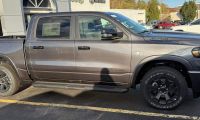
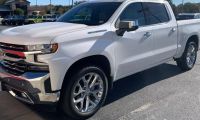
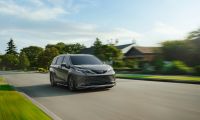
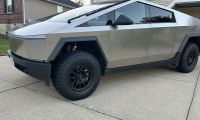
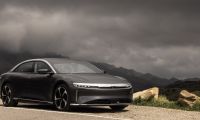
Comments
If companies like Nissan LEAF
Permalink
If companies like Nissan LEAF and KIA SOUL EV had liquid cooled batteries that would last 10x longer we would be in better shape. They have thousands of main battery packs that have failed and wilted in HOT climates. That's a lot of dead batteries.